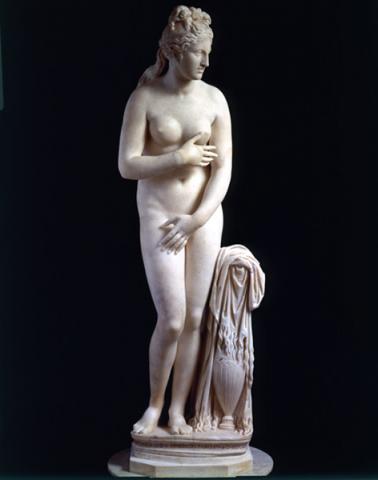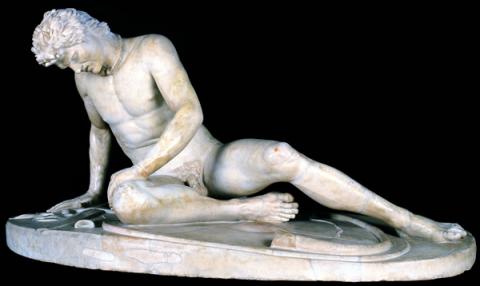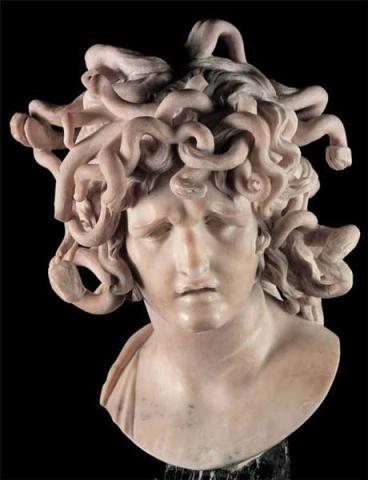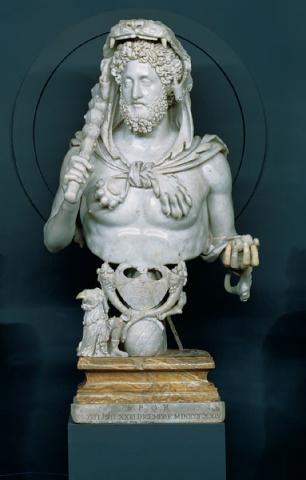Ritratti. Le tante facce del potere

Second in the series “I giorni di Roma” (The days of Rome), this exhibition offers the chance to ponder on Roman portraits, a real communication tool used to affirm political and social prestige in public and commemorative monuments, tombs and private houses from the late Republican age.
The portrait is a way to pass on one’s memory through time. Through the many artistic techniques adopted - painting, sculpture, photography and, finally, most shocking of all, cinema, because the figure is not frozen in an eternal moment, but also with a sense of movement and life – it does not change the desire to ward off death, leaving to posterity an image of oneself that can survive over the centuries. The creation of an object, not just artistic, as a substitute for the person was one of the first actions taken by men, by leaving their fingerprints on the walls of caves, covering the skulls of ancestors with clay to give them a human feature, or erecting tombs to the dead.
Taking the cue from this consideration and through a rich selection of portraits – more than 150 pieces, including heads, busts and life size statues on loan from the major European museums –, the exhibition (curated by Eugenio La Rocca and Claudio Parisi Presicce) offers visitors the chance to understand the origins and techniques of Roman portraits, ranging from the Republican age to late antiquity. The exhibition spans from the first portraits in terracotta and bronze to the marble and bronze production in the Imperial Age.
Since the late Republican age, Rome and the Roman cities were filled with an overwhelming amount of images: public and commemorative monuments, funeral memorials and houses showed the faces of honourful people or illustrious ancestors.
It is clearly a need for communication aimed at enhancing personal prestige and status. It is not simply a question to reproduce the features of the person, but a form of self-representation. This gave rise to different types of portraits that, while still able to reproduce the facial features of famous people, present a heroic image of the person portrayed.
It is a communicative phenomenon common in Greece, for instance in the portraits of rulers, which shift from realistic portraits, conveying a strong sense of energy, to idealized and godlike ones.
Romans adapted them to their society in an exceptional way, as shown by the portraits of Augustus, portrayed as a young Alexander the Great when he was young, or as a thoughtful and modest man when he grew older.
Moreover, almost every emperor tried to portray himself in a way that exalted his character and political strategies: from the almost "baroque" features of Nero's last portrait to the realistic and austere faces of the first two Flavian emperors (Vespasian and Titus), which echo in some way the Republican portraits, from the Hellenic faces of Hadrian and Antoninus Pius to the austere and stern face of Marcus Aurelius, to the powerful and energetic portraits of the emperors soldiers of the third century. The portraits are far from simple "photographs": they are made using a language that, in the case of emperors, conveys a strong message on the different conceptions of power.
During the imperial period, a central role was played by the attempt by commons to adapt their image to that of their emperor. It's a well-known phenomenon that, while allowing to establish a history of portraiture, shows very clearly the changing tastes and different ways of self-representation of the ruling classes.
Besides the unquestionable beauty and importance of the works on display, the exhibitions offers many thoughtful reflections.
The From Mask to Portrait section describes the developments that led from the moulds made on the face of the deceased or of living figures to the first portraits. Egypt, Greece, and Rome explores the many artistic trends of Roman portraiture from the Republican age to the beginning of the empire. The tour continues with Princes and Private Individuals as Gods, which offers the public the guidelines for associating one's image with a god. The Image Scheme is reserved for the representation of the body of the figure portrayed. It provides an overview of the different kinds of honorary portraits that were available in Rome. Self celebration, personal gratitude, and the desire to show one's trendiness led to a phenomenon called image assimilation, which consisted in the tendency to repeat in private portraits the facial characteristics of emperors or other members of the reigning dynasty, as shown in the The Face of the Powerful section. The series of women on display in the Female Hairstyles section will guide visitors through a gallery of imaginative and bizarre solutions chosen to set flowing hair, which became a veritable instrument for flaunting one's personal taste, as well as a declaration that one belonged the caste in power.
Screens that reproduce some of the most representative portraits are installed along the exhibition path, at whose end there is a photographic box that offers you the morph your face into an ancient portrait and take a picture send it to your e-mail.
The exhibition catalog contains texts written by Klaus Fittschen, Paul Zanker, Annalisa Lo Monaco, Matteo Cadario, Laura Buccino, Riccardo Di Cesare, Massimiliano Papini, Stefano Tortorella, Eugenio La Rocca and Claudio Parisi Presicce.
Information
Tuesday-Sunday: 9.00 am - 8.00 pm;
Last admission 1 hour before closing time;
Closed: Monday, May 1.
(Museum + Exhibition) Combined Ticket:
Adults: € 12,00;
Concessions: € 10,00;
Special “Ridottissimo” Ticket: € 2,00.
Roman citizens only (by showing a valid ID):
Adults: € 11,00;
Concessions: € 9,00;
Special “Ridottissimo” Ticket: € 2,00.
According to the Municipal by-law n. 32 of 26/03/2009 and due to the exceptionality of the exhibition “Ritratti. Le tante facce del potere” no free entry to visitors who usually are entitled to gratuity is available. However, they are entitled to a reduced € 2.00 ticket. Free admission is granted only to: children under 6 years of age, elementary and intermediate school groups, disabled people and a carer and Roma Pass and Roma&Più Pass card holders if used to claim one of the first two free admissions.
Info: tel. +39 060608 (daily from 9.00 am to 9.00 pm)
Press Room
70143

70130

70150

Musei Capitolini - Palazzo Caffarelli - Palazzo dei Conservatori
70124

70129

70149

Musei Capitolini - Palazzo Caffarelli - Palazzo dei Conservatori
70123

78249

Musei Capitolini - Palazzo Caffarelli - Palazzo dei Conservatori
70128

70982

70981

70131

Eventi correlati
79524

72332













































